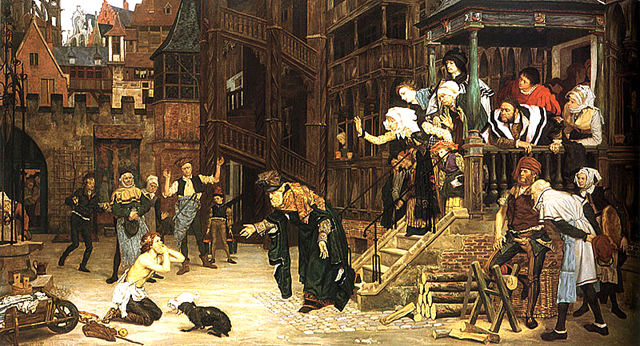Behind the Vatican’s Locked Doors
Is God Working in Secret?
What is going on in Rome right now might be of interest only to our Roman Catholic neighbors. But when one denomination boldly claims to be the one and only true church, they invite the attention of the rest of us neo-Gentiles.
Protestant leaders tend to emulate the Roman Catholics, often forgetting the reasons we separated 500 years ago. Some of the reasons have disappeared. Other have not. It’s probably envy for the attention the media gives to the pope.
Truth be told, Protestants have their own messes to clean up today—lots of them, in fact. We don’t really need to be watching so closely.
Nevertheless, beginning this week, all eyes will be on Rome. The process promises to take us close to Holy Week. Guess how much attention Protestant churches will get from the media this Easter season.
We don’t know how things will turn out. One learned church authority described the process and closed his statement saying, “In the end, it’s God’s choice.”
Really? God needs the help of 115 old men, each with considerable self-interest, to name his new Saul or Peter?
Why is the process so secret? Tradition is not a good enough reason anymore. Tradition has led to horrific abuses. Furthermore, tradition has condoned the abuses and made a habit of victimizing any voice of dissent. Again, Protestants share in these atrocities. For once, they can be glad the media concentrates on the Roman church.
Can we, perhaps, learn and adapt traditions so they make sense?
Secrecy in choosing leaders reveals distrust in any human ability beyond the chosen elite. It leads the Church down the road of management not leadership. Managers tend to preserve what they have as they seek to maintain and expand the same power structure. The privileged will remain privileged. Outsiders will fight for a voice.
Leaders, on the other hand, assess the existing resources and add dreams—their own and those of others. This is what the Church today — Roman and Protestant — needs badly.
Leadership has been with us always. In recent years, sparked by the Renaissance, the Reformation and the rise of Democracy, the concepts of leadership have been studied. Much of this research and analysis emerged during the last century but it continues as the world is redefined by digital communication. Old principles will be applied in new ways.
- We know now that heredity does not ensure good leadership.
- We know that occasionally the best leaders come from outside a given structure.
- We know that genitalia is not a predictor of effective leadership.
- We know that there is no chosen race that excels in leading.
- We know that the most effective leaders are often unarmed.
- We know that input from all leads to better decisions.
- We know that any voting process is not foolproof.
- We know that any power, however and once bestowed, needs to be watched.
- We know that future power might be sitting today in a jail cell.
- We know that power need not be a life-long mandate. Power can be passed on to successors peacefully and former leaders can return to “civilian” life.
- And with all this new knowledge about leadership, we know mistakes can still be made and power can be abused.
Yes, we know more than we did some 2000 years ago, when someone had to figure out what to do upon the demise of Christ’s hand-picked favorite — the mercurial and passionate Simon Peter. They got it wrong a few times, terribly wrong for a while, which brings to question the conclusion that this is God’s process.
We have ample experience these days with dictators and despots—some benevolent, some ruthless.
We have learned that secrecy and exclusion is a predictor of problems.
Good leaders operate in open ways, building trust with honesty and accountability.
The Church has been very bad at this.
Protestants fall into the same trap. In our denomination there seems to be a behind closed doors vetting process. You have to play to have a say.
The archaic processes are designed to evoke mystery and keep the sheep at the far end of the fold with a few barking dogs between them and the emerging leaders.
Just look at the customs that are revealed on the evening news.
- The papal apartment is sealed. Against what?
- The stoves and chimneys are installed so that smoke can signal the cardinals’ progress. Come on! Even Pope Benedict used Twitter.
The mind games, always part of the process, become tiresome in the media. They would have us believe none of the cardinals aspire to stand on the balcony with the world watching. They are all so engaging as they describe their reluctance. One candidate is out of socks. Another just wants us to know he bought a roundtrip ticket. Coach or first class?
But again. This is all the business of the Roman Catholic church. It doesn’t involve the various branches of Christianity, including the Orthodox who were the first to leave the self-proclaimed one true Church. (Or did the Roman Church leave the Eastern Church?)
Orthodox and Protestant Christians are not involved in choosing the leadership of the one, true Church. Neither are most Roman Catholics. (Click to Tweet)
The difficult thing to understand is why Protestant leaders, excluded from the club, travel to Rome for photo ops with the pope. There is zero benefit to their denominations, which are surely footing the bill.
The reality is this: the papacy and all church leadership face a new age in which hierarchies as we know them will topple.
It could come hard. It could come easily. It’s going to come. Whomever God or the conclave chooses will be managing or leading God’s people into a new religious era.












